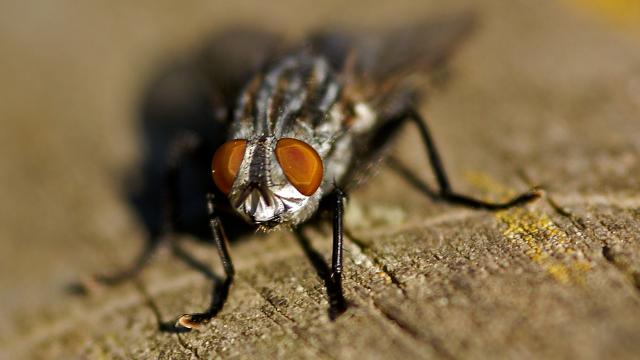Upwards of 90 per cent of insects found in British hospitals carry potentially harmful bacteria, according to new research. Alarmingly, a significant portion of this bacteria is resistant to one or more antibiotics, highlighting a previously under-appreciated health risk—though the researchers caution that chances of infection are low.
New research published last week in the Journal of Medical Entomology shows that nearly nine in 10 insects caught in British hospitals carried problematic germs, including potentially harmful bacteria such as E.coli, Salmonella, and Staphylococcus aureus.
More than half of this bacteria was found to be resistant to one or more antibiotics. The vast majority of bugs analysed in this study were flying insects, a finding that underlines “the importance of pest control measures in healthcare environments to prevent public health risk to patients,” as noted in an Aston University press release.
In an email to Gizmodo, Federica Boiocchi, a co-author of the study and a PhD student at Aston University, said a risk for infection exists, but it’s not as high as we might think.
“Mostly it depends by the bacterium carried by the fly and where the fly lands,” she said. “Our study showed that some flies carry pathogenic bacteria but the amount of bacteria recovered was not enough to cause infection. The risk is mainly related to the fact that flies represent a reservoir of bacteria.”
Boiocchi offered the following scenario: A fly lands on a slice of apple and releases some bacterial cells that were present on its legs or in its faeces.
These bacterial cells, even if they are pathogenic, are not able to cause an infection because there are too few of them, she said, but maybe after hours -depending on the strain – the bacteria would have proliferated to great enough numbers to cause an infection in someone who eats the apple.
Anthony Hilton, the lead author of the new study and a professor of applied microbiology at Aston University, echoed these sentiments in the press release, saying Britain’s National Health Service (NHS) hospitals “are extremely clean environments” and that the risk of bacterial infection from insects is “very low.”
The main message of the paper, he said, “is that even in the cleanest of environments, it’s important to take steps to prevent bacteria being brought into hospitals by insects,” adding that “NHS hospitals will already be implementing many of these measures, but there are simple steps that can be taken to improve this further.”
Insects that breed inside of hospitals, such as cockroaches, bedbugs, and ants, are a well-studied health concern, but less is known about flying insects and their potential to spread diseases around healthcare settings.
For the new study, Aston University PhD student Federica Boiocchi and her colleagues used ultraviolet (UV) light traps, electronic fly killers, and sticky traps to collect nearly 20,000 insects. The traps were positioned in wards, neonatal and maternity units, and in areas where food was being prepared. The bugs were caught in seven different British hospitals over an 18-month period from March 2010 to August 2011.
Of the 19,937 individual bugs captured, flies (Diptera) were the most common, representing 73.4 per cent of the samples. These included species like common houseflies, bluebottles, greenbottles, midges, and mosquitoes. Other insects caught included aphids, ants, wasps, bees, and moths.
Focusing on the flies, the researchers detected 86 distinct bacterial strains, either on or inside their bodies, but not in the quantities required to kickstart an infection.
The most common strains included the Enterobacteriaceae family (a group that includes E.coli and Salmonella) at 41 per cent, Bacillus (some strains of which result in food poisoning) at 24 per cent, and Staphylococcus (a group that includes S. aureus, which can cause skin and respiratory infections) at 19 per cent.
The researchers found that 53 per cent of the bacteria found on the flies were resistant to one or more types of antibiotics. Of these, 19 per cent were resistant to multiple antibiotics.
Penicillin was found to be among the least effective of the antibiotics, with vancomycin and levofloxacin not too far behind. As Boiocchi pointed out, this is “a vivid reminder of how our overuse of antibiotics in healthcare settings is making infections more difficult to treat.”
Asked what surprised her most about the study, Boiocchi said it was the great diversity of insect species found in hospitals.
“The fact that flies carry bacteria is nothing new, instead I was really surprised to find many different species, especially outdoor insects that do not belong in that environment!” she wrote.
The data presented in the new paper is definitely a bit troubling, but as Hilton pointed out, insects play “a very small role in the transfer of bacteria.” The chance of acquiring an infection from a flying insect is low, but it won’t hurt to reduce their populations in hospitals just to be safe.
